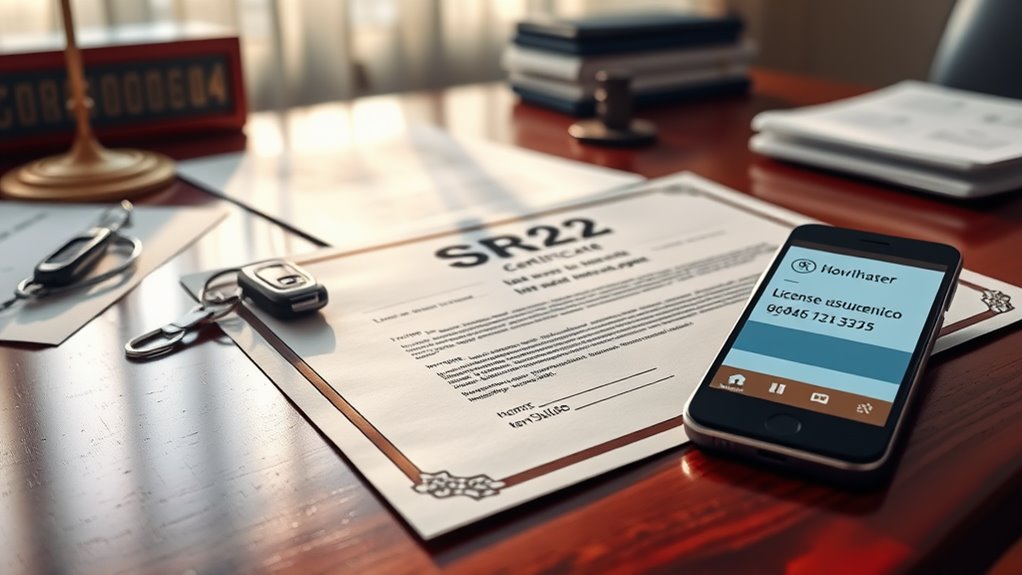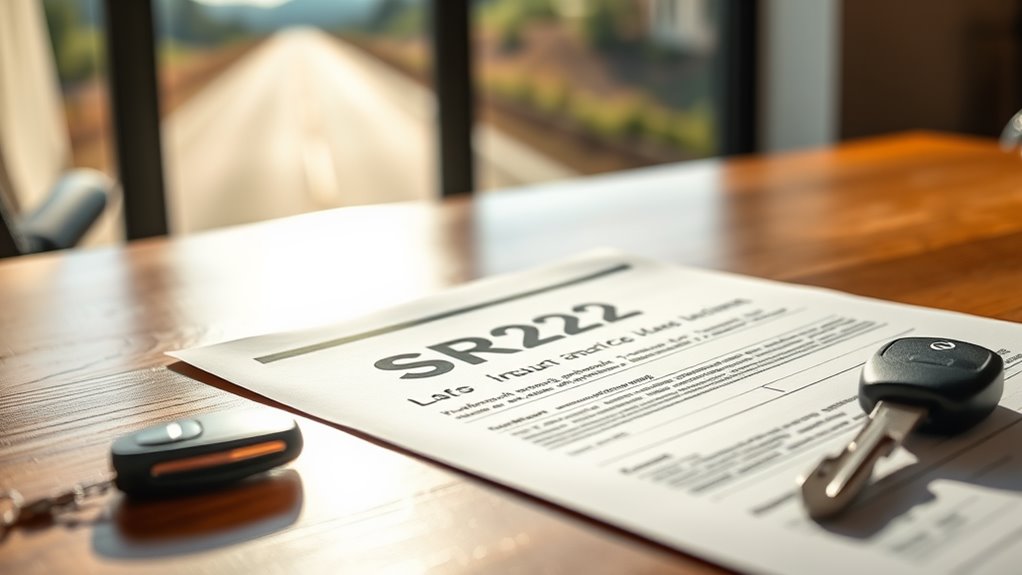Facing a license suspension can feel like a setback, but regaining your driving privileges doesn't have to be complicated. An SR22 bond not only proves your financial responsibility but also streamlines your path to reinstatement. This essential step can prevent further penalties and guarantee you stay compliant with state laws. Discover how an SR22 can protect you and help you reclaim your independence on the road.
If you've faced a license suspension due to serious traffic offenses like DUIs or driving without insurance, you might need an SR22 bond for reinstatement. An SR22 bond serves as proof of financial responsibility, which is critical for getting your driving privileges back. When you've been convicted of serious offenses or accumulated too many traffic violations, your state may require you to file an SR22 to guarantee you maintain minimum liability coverage for a specified period, often lasting multiple years. Additionally, SR-22 insurance is often required for those classified as high-risk drivers, making it essential for compliance.
DUI convictions and driving without insurance are common reasons for needing this bond. If you've been involved in an uninsured accident or classified as a high-risk driver due to multiple at-fault accidents, you'll likely face SR22 requirements, too. Even court-ordered judgments can necessitate SR22 insurance. By securing this bond, you comply with state laws and demonstrate that you're responsible enough to drive again. Additionally, it's important to note that an SR-22 proves compliance with financial responsibility laws, which helps reduce uninsured driving incidents.
One of the primary benefits of obtaining an SR22 bond is the speed at which it can help you reinstate your suspended license. It provides a clear path back to legal driving, allowing you to regain your independence. Additionally, maintaining an SR22 guarantees you comply with state financial responsibility laws, helping to prevent any future license suspensions by keeping continuous insurance coverage.
If you don't own a vehicle, you can still meet the requirement through a non-owner SR22 policy. This flexibility allows you to adhere to the law, regardless of your vehicle ownership status.
To obtain an SR22 bond, you'll first need to contact an insurance provider that offers SR22 services. Not all insurance companies provide SR22 coverage, so it's important to ask upfront. Once you secure coverage, your insurance company will file the SR22 form with the state DMV on your behalf.
The application process can vary by state, but generally, you'll need to provide documentation and pay a reinstatement fee. Checking your state's specific requirements is significant to confirm you follow the correct procedures.
There are some common misconceptions about SR22 bonds that you should be aware of. An SR22 isn't a type of insurance; it's merely proof of financial responsibility. Some drivers mistakenly believe they don't need it, which can lead to further penalties or additional license suspensions.
It's also important to note that the costs associated with SR22 insurance may be higher due to your high-risk status.
Lastly, don't ignore the legal considerations surrounding SR22 requirements. While these are usually mandated by the state, it's wise to consult with a legal professional if you have any doubts about your specific situation. Addressing reinstatement fees and penalties is equally important in addition to obtaining your SR22 bond.
Conclusion
Choosing an SR22 bond for license reinstatement is like finding a lifeline in turbulent waters. It not only helps you navigate the stormy seas of legal requirements but also anchors your commitment to responsible driving. With this bond, you're not just reclaiming your license; you're paving the way to independence and peace of mind. Don't let past mistakes hold you back—embrace the path forward and drive confidently into a brighter, unrestricted future.



